I thought I'd post this here just in case anyone is interested! I've finally got around to completing the oil breather extension modification on my Rapide. As we know the timed breather continuously pulses an oil mist out of the crankcase as it relieves the internal pressure, and of course the more wear the engine has, then the more the crankcase becomes pressurised, and the more oil escapes.
The issue I've found with this is it coats the underside of my engine and tread down stand resulting in when I park up after a ride it looks as if my bike is leaking torrents of oil as there's always a few drops in various places under the engine after half an hour or so. This is just the film of oil on the underside collecting on the low points of the engine then dropping off to the floor.
I was aware of the modification (that I believe is detailed in "Know Thy Beast") where the crankcase breather is extended down side of the bike so the oil mist is ejected behind the rear brake drum and doesn't coat the underside of the bike.
Anyway, at the end of last year I saw a pair of stainless steel extension tubes advertised in the Vincent HRD group chat on Facebook and thought let's see if I can do anything with those. Photos of machines I've seen with this modification have always had the extension pipes running down the nearside, however if you have a tread down stand it interferes with the actual tread down part of the stand, which means it can't be fully raised (by a considerable amount).
My solution was to run the extension tubes down the offside of the bike, tucked under the exhaust. In this position they are a lot less noticable and more importantly allows the tread down stand to be fully raised and doesn't interfere with the rear stand operation either.
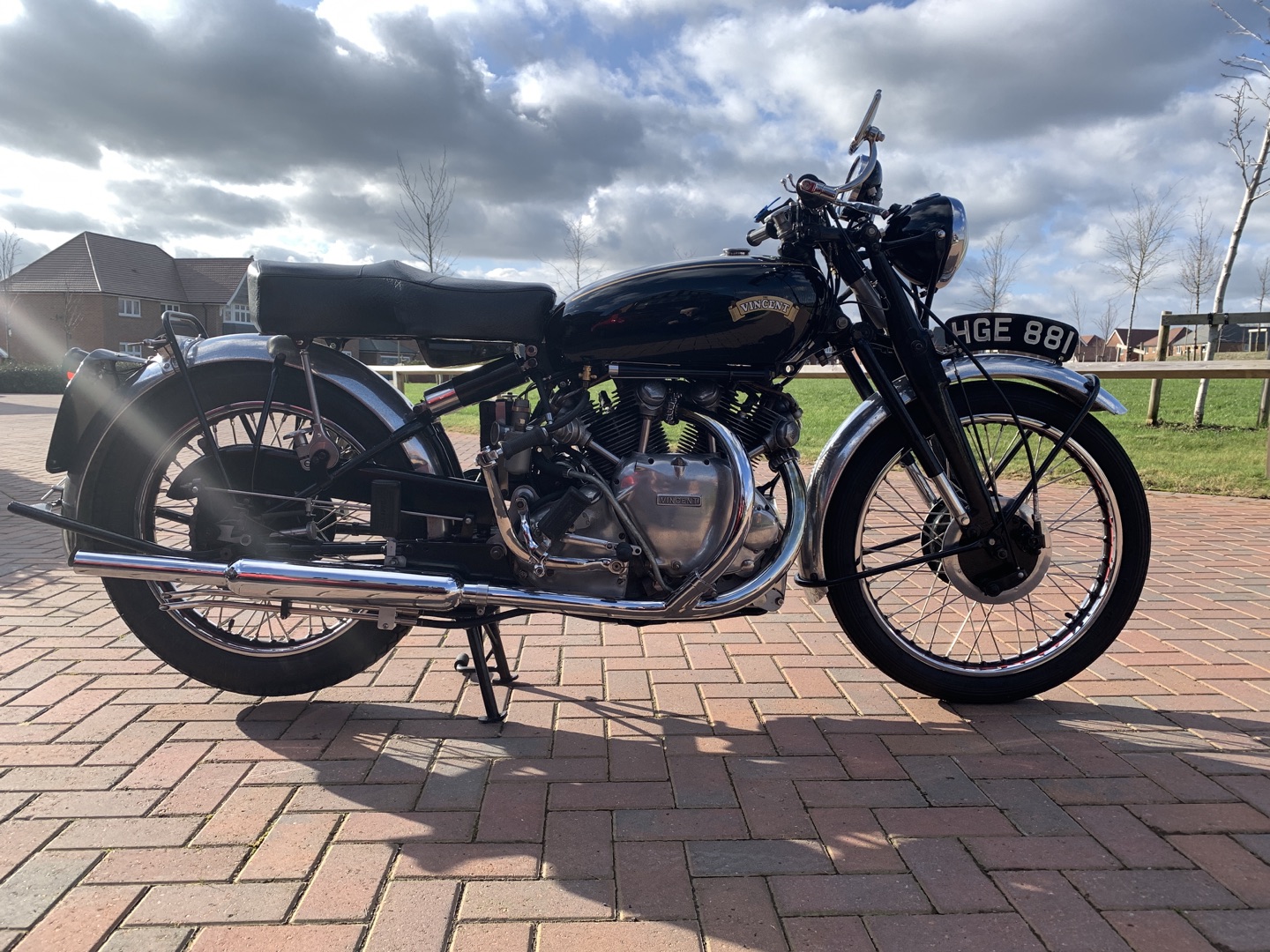
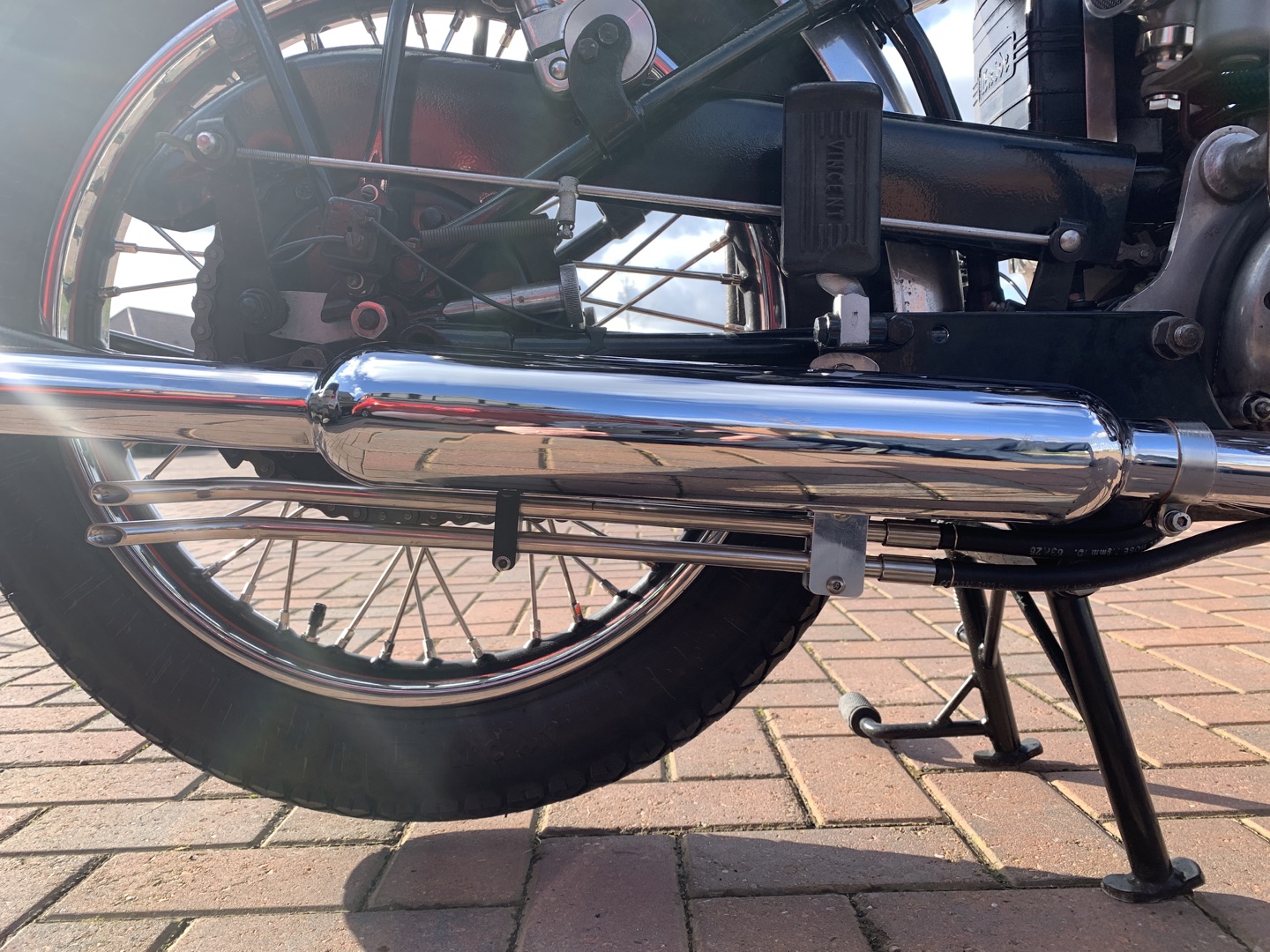
I also fitted an additional breather extension which comes from the rear cylinder inlet rocker cap, the idea is to lessen the compression in the crankcases as this breather is alway open as opposed to being timed.
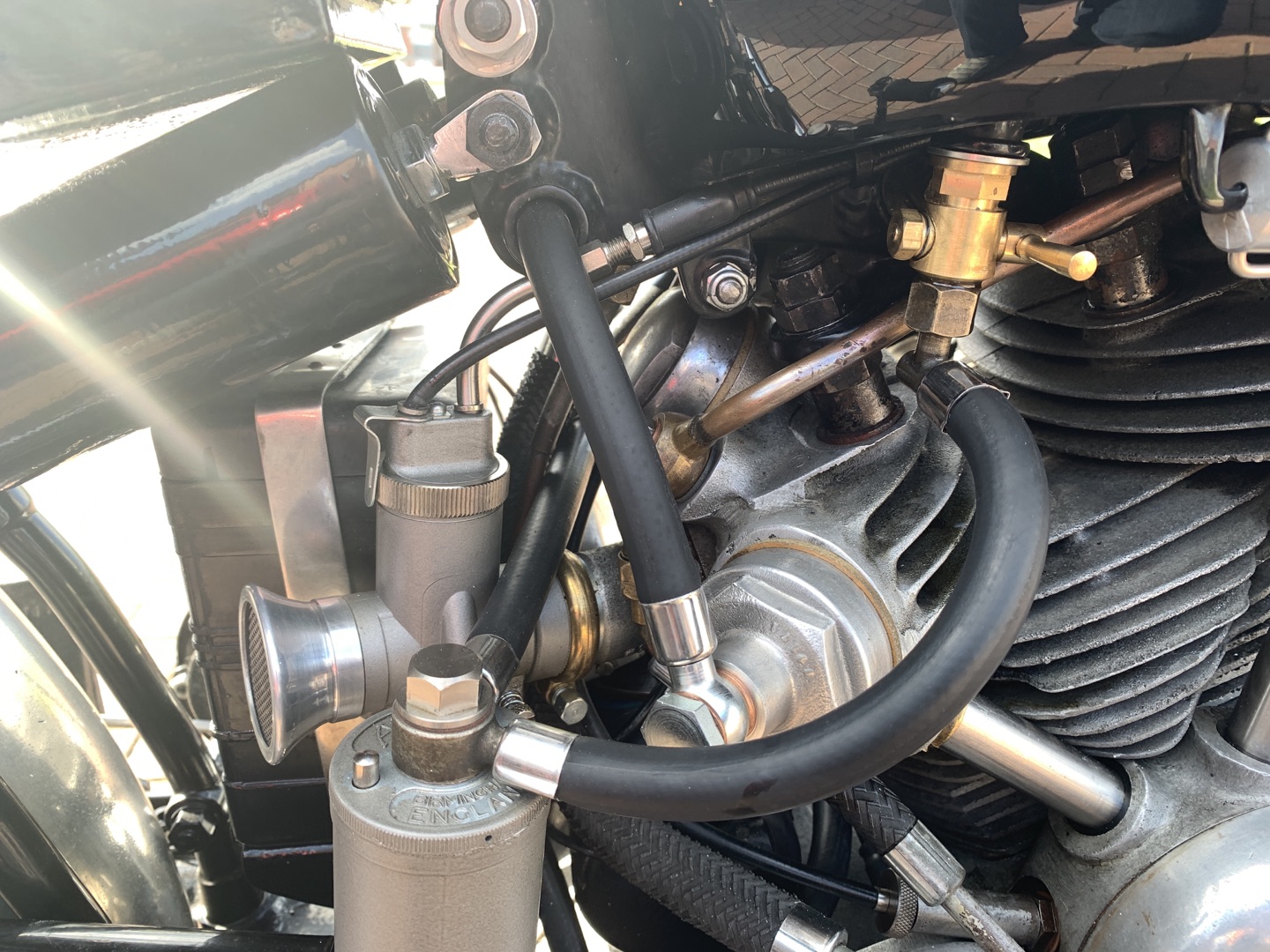
The hose goes through the sidecar mounting hole in the frame, down the other side then connects to the stainless steel extension tubes.
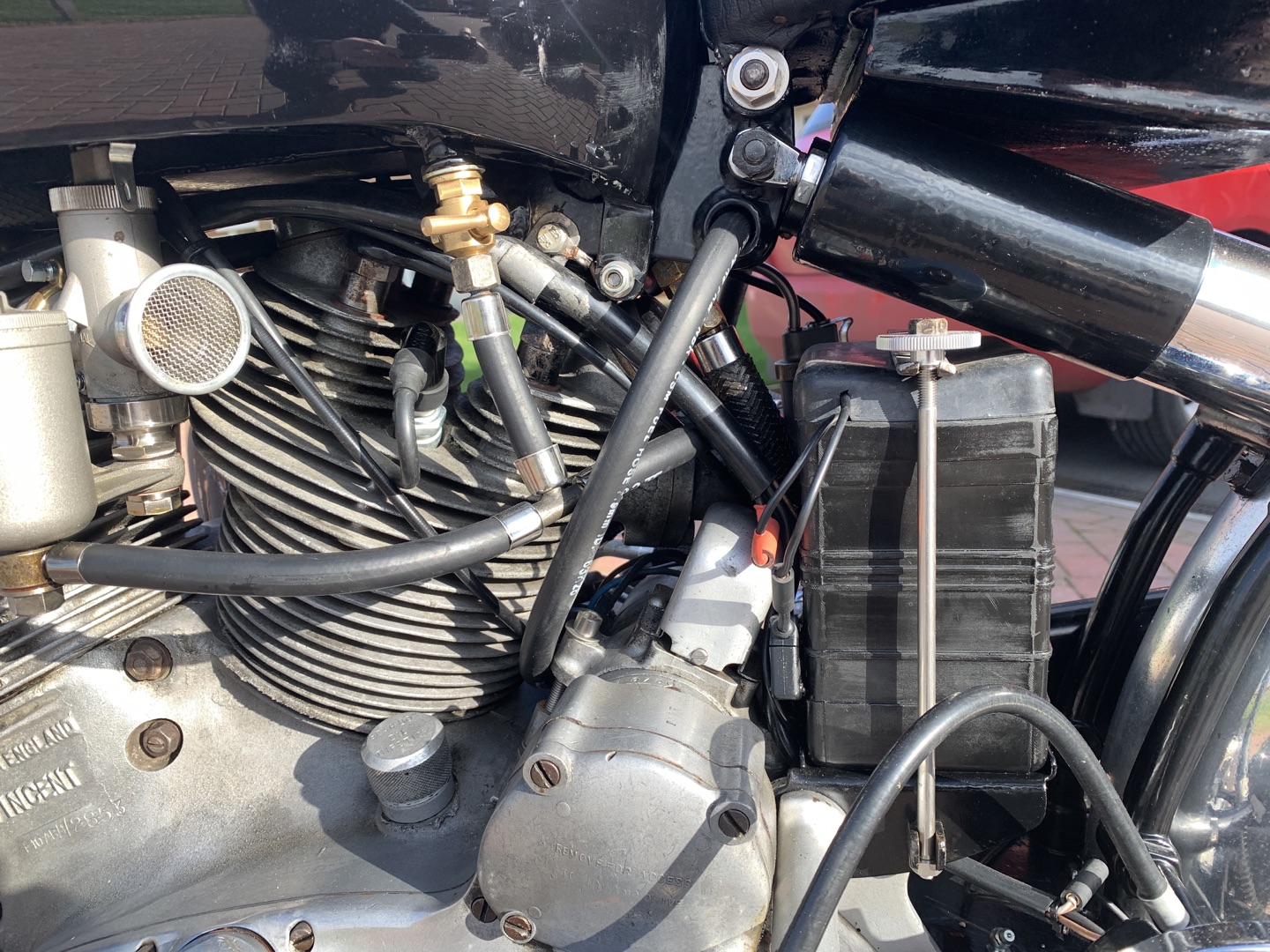
I've been out for a 40 mile ride today and am pleased to report no more drips from the underside of the crankcases when parked, just the usual single drip from behind the kickstart cover plate. I'm very pleased with results so far and pleased the eye isn't drawn to it as it's mostly hidden by the exhaust. it's also only about a quarter of an inch lower the the pivot point of the stand so the ground clearance isn't affected to any meaningful degree. I'm also pleased that there's a lot less visual impact than the the alternative elephant breather I was considering fitting.
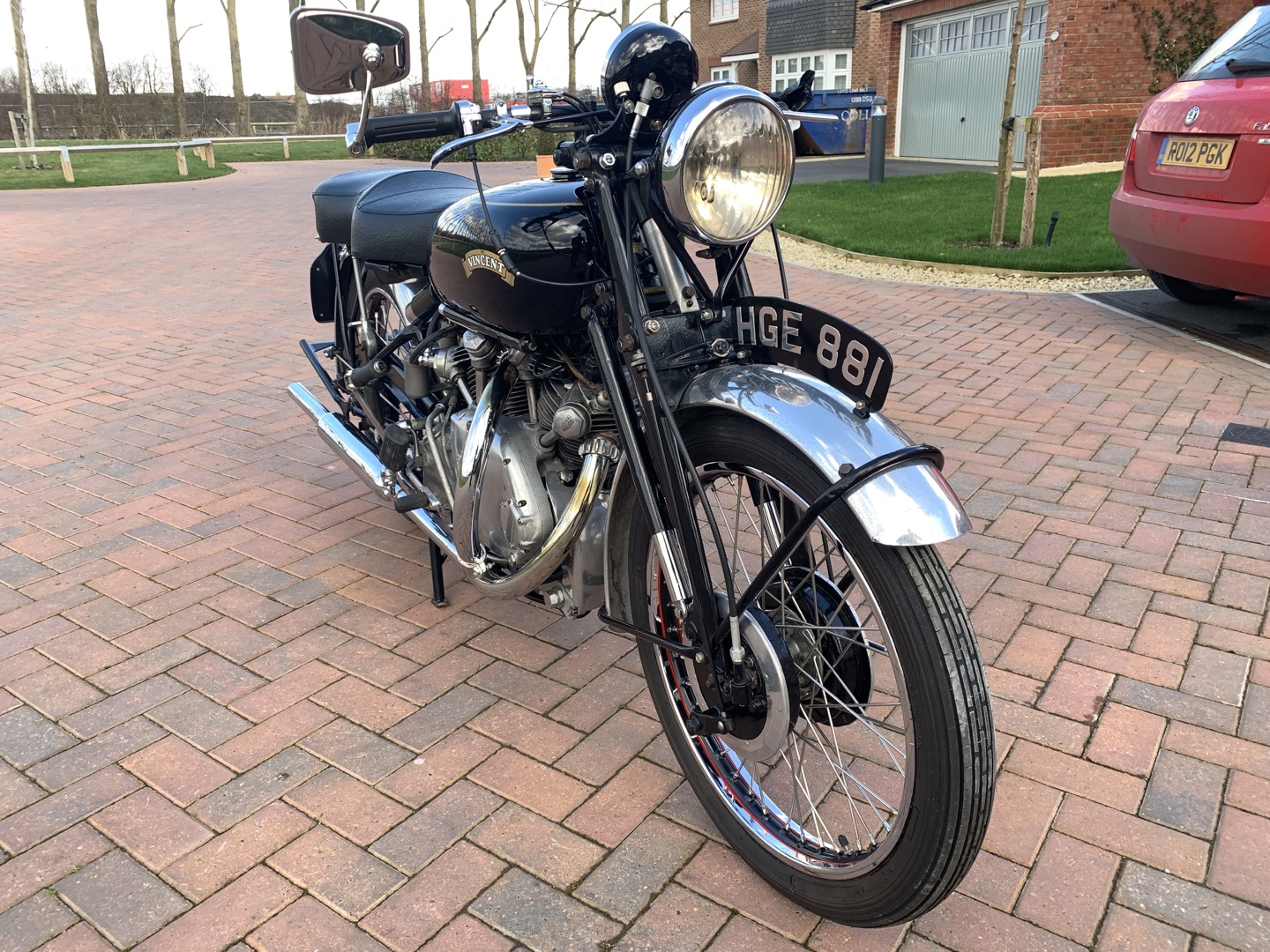
I'll see how it performs long term, but hopefully it will work as intended!
The issue I've found with this is it coats the underside of my engine and tread down stand resulting in when I park up after a ride it looks as if my bike is leaking torrents of oil as there's always a few drops in various places under the engine after half an hour or so. This is just the film of oil on the underside collecting on the low points of the engine then dropping off to the floor.
I was aware of the modification (that I believe is detailed in "Know Thy Beast") where the crankcase breather is extended down side of the bike so the oil mist is ejected behind the rear brake drum and doesn't coat the underside of the bike.
Anyway, at the end of last year I saw a pair of stainless steel extension tubes advertised in the Vincent HRD group chat on Facebook and thought let's see if I can do anything with those. Photos of machines I've seen with this modification have always had the extension pipes running down the nearside, however if you have a tread down stand it interferes with the actual tread down part of the stand, which means it can't be fully raised (by a considerable amount).
My solution was to run the extension tubes down the offside of the bike, tucked under the exhaust. In this position they are a lot less noticable and more importantly allows the tread down stand to be fully raised and doesn't interfere with the rear stand operation either.


I also fitted an additional breather extension which comes from the rear cylinder inlet rocker cap, the idea is to lessen the compression in the crankcases as this breather is alway open as opposed to being timed.

The hose goes through the sidecar mounting hole in the frame, down the other side then connects to the stainless steel extension tubes.

I've been out for a 40 mile ride today and am pleased to report no more drips from the underside of the crankcases when parked, just the usual single drip from behind the kickstart cover plate. I'm very pleased with results so far and pleased the eye isn't drawn to it as it's mostly hidden by the exhaust. it's also only about a quarter of an inch lower the the pivot point of the stand so the ground clearance isn't affected to any meaningful degree. I'm also pleased that there's a lot less visual impact than the the alternative elephant breather I was considering fitting.

I'll see how it performs long term, but hopefully it will work as intended!
